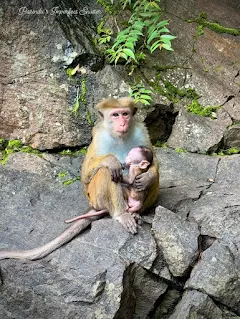 |
| Ultimate Wildlife Photography Guide: Tips, Techniques & Gear for Stunning Shots. Image by Pasindu’s Imperfect Shutter |
Wildlife photography is an exhilarating and challenging genre that immerses you in nature, letting you capture wild animals in their natural habitats.
With my experience as a wildlife photographer, I’ll share some actionable techniques and practical tips to elevate your wildlife photography adventures.
What is Wildlife Photography? The Art of Capturing Nature
Wildlife photography focuses on documenting animals in their ecosystems.
It demands patience, persistence, and deep knowledge of animal behavior.
The goal? To create compelling images that tell stories, evoke emotions, and support wildlife conservation efforts.
Essential Wildlife Photography Techniques
1. Mastering Animal Behavior for Stunning Wildlife Shots
Understanding your subject’s habits is critical.
Research species’ habitats, feeding patterns, and social dynamics.
Observe quietly from a distance to predict movements and interactions.
2. Choosing the Best Wildlife Photography Gear
Invest wisely:
- Camera: Opt for fast burst rates and excellent low-light performance (e.g., full-frame DSLRs or mirrorless cameras).
- Lenses: Telephoto lenses (200mm–600mm) are essential for distant subjects. Image stabilization reduces shake.
- Support: Use a sturdy tripod or monopod for stability.
- Protection: Weatherproof bags and insect repellent safeguard gear.
3. Advanced Composition for Wildlife Photography
Elevate your shots by mastering the proper composition techniques:
- Rule of Thirds: Position subjects off-center for dynamic framing.
- Leading Lines: Use natural elements (branches, rivers) to guide the eye.
- Negative Space: Highlight the animal’s environment for scale and drama.
4. Harnessing Natural Light in Wildlife Photography
Golden hour (dawn/dusk) offers warm, soft light that enhances textures.
Overcast days provide diffused lighting for even exposure.
Practical Wildlife Photography Tips
1. Prioritise Patience and Persistence
Wildlife photography often requires hours (or days) of waiting.
Stay committed—the perfect shot is worth it.
2. Stay Silent and Minimize Movement
Avoid startling animals.
Use your camera’s silent mode and move slowly.
3. Freeze Action with Fast Shutter Speeds
Use ≥1/1000s shutter speed to capture sharp images of moving wildlife.
4. Focus Sharply on the Eyes
Eyes convey emotion.
Enable continuous autofocus (AI Servo/AF-C) for tack-sharp results.
5. Capture Behavior and Animal Interactions
Seek moments like feeding or play to add storytelling depth.
6. Leverage Burst Mode
Shoot in rapid sequences to nail fleeting moments.
7. Practice Ethical Wildlife Photography
Respect habitats: maintain distance, avoid disruption, and follow conservation guidelines.
Inspiration for Your Wildlife Photography Journey
1. Explore National Parks and Wildlife Reserves
Hotspots like Yellowstone or Serengeti offer unparalleled access to diverse species.
2. Study Nature Documentaries
Learn from BBC Earth and National Geographic to understand animal behavior.
3. Enter Wildlife Photography Competitions
Compete in contests like Wildlife Photographer of the Year for exposure and growth.
4. Follow Top Wildlife Photographers
Gain insights from pros like Frans Lanting and Ami Vitale.
5. Join Photography Communities
Share work in online forums or local clubs for feedback and motivation.
Conclusion
Wildlife photography merges technical skill with profound respect for nature.
By applying these wildlife photography techniques—prioritizing ethics, mastering gear, and studying behavior—you’ll create impactful images that champion conservation.
Grab your camera, venture into the wild, and start shooting!
Happy shooting!
From Pasindu (Pasindu’s Imperfect Shutter) 🥰
#pasindusimperfectshutter #photographyeveryday #photography #beginnersguide #essentialsofphotography #wildlifephotography #learnphotography #beginnerfriendly #wildlife






No comments:
Post a Comment